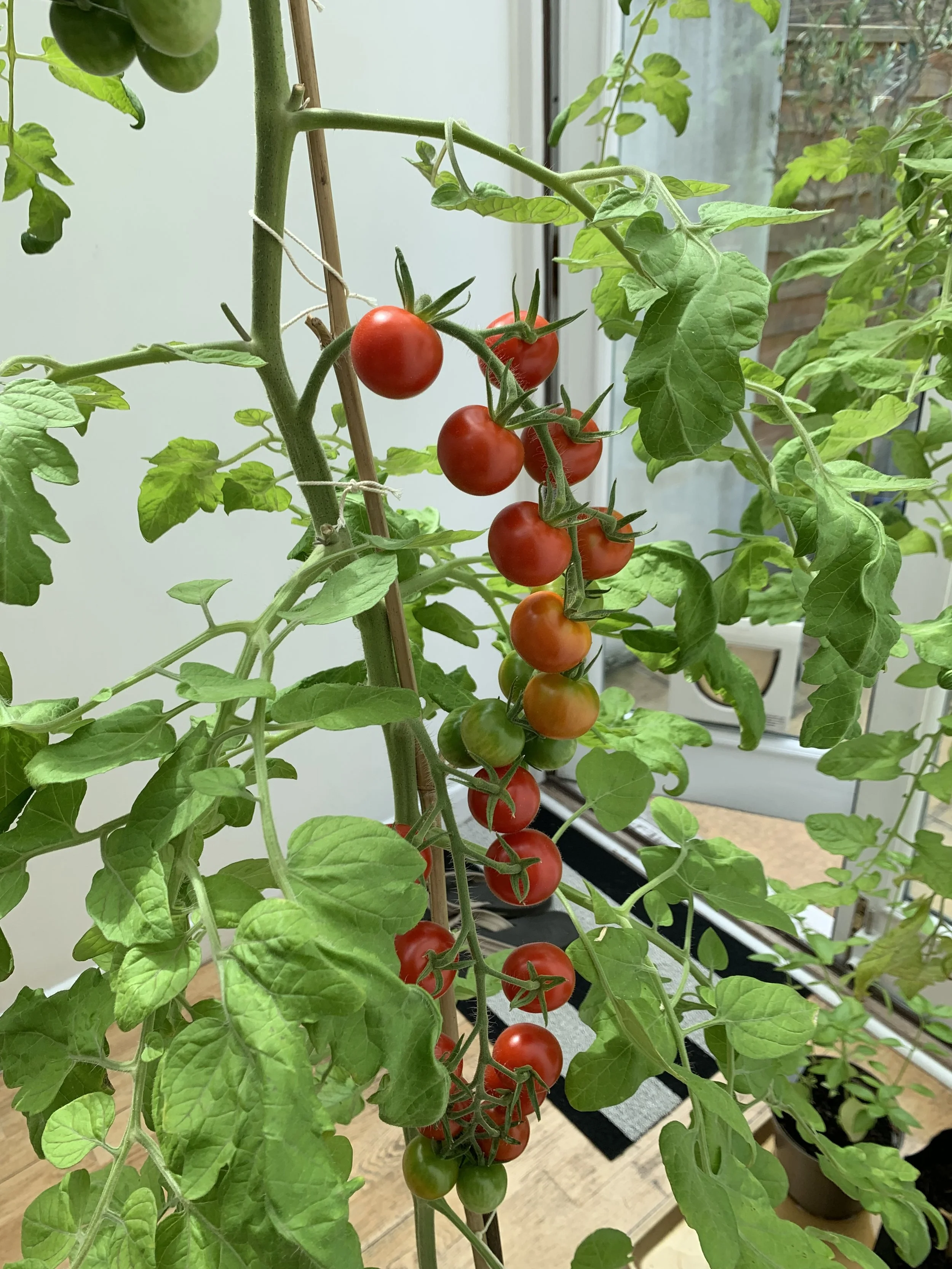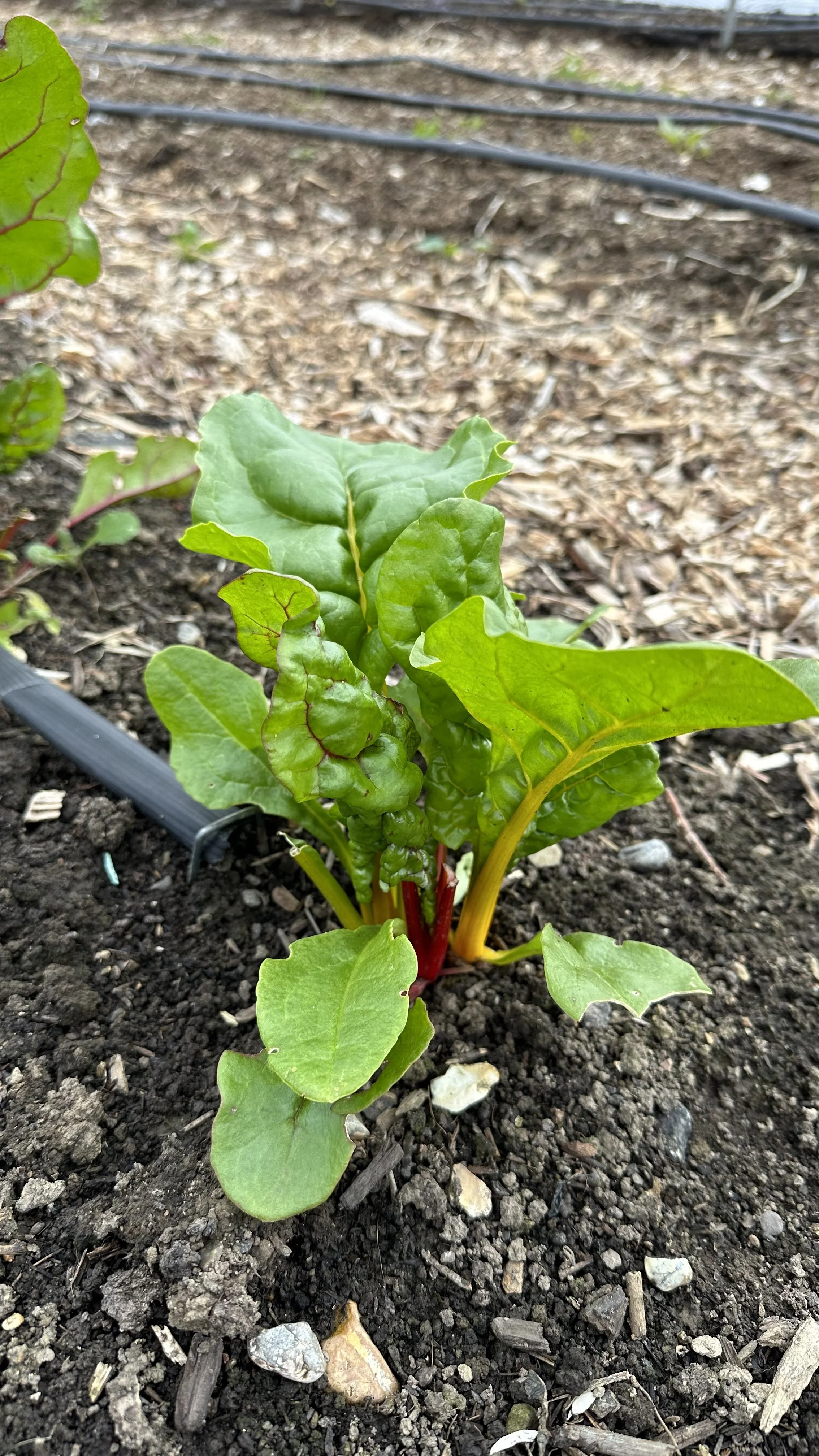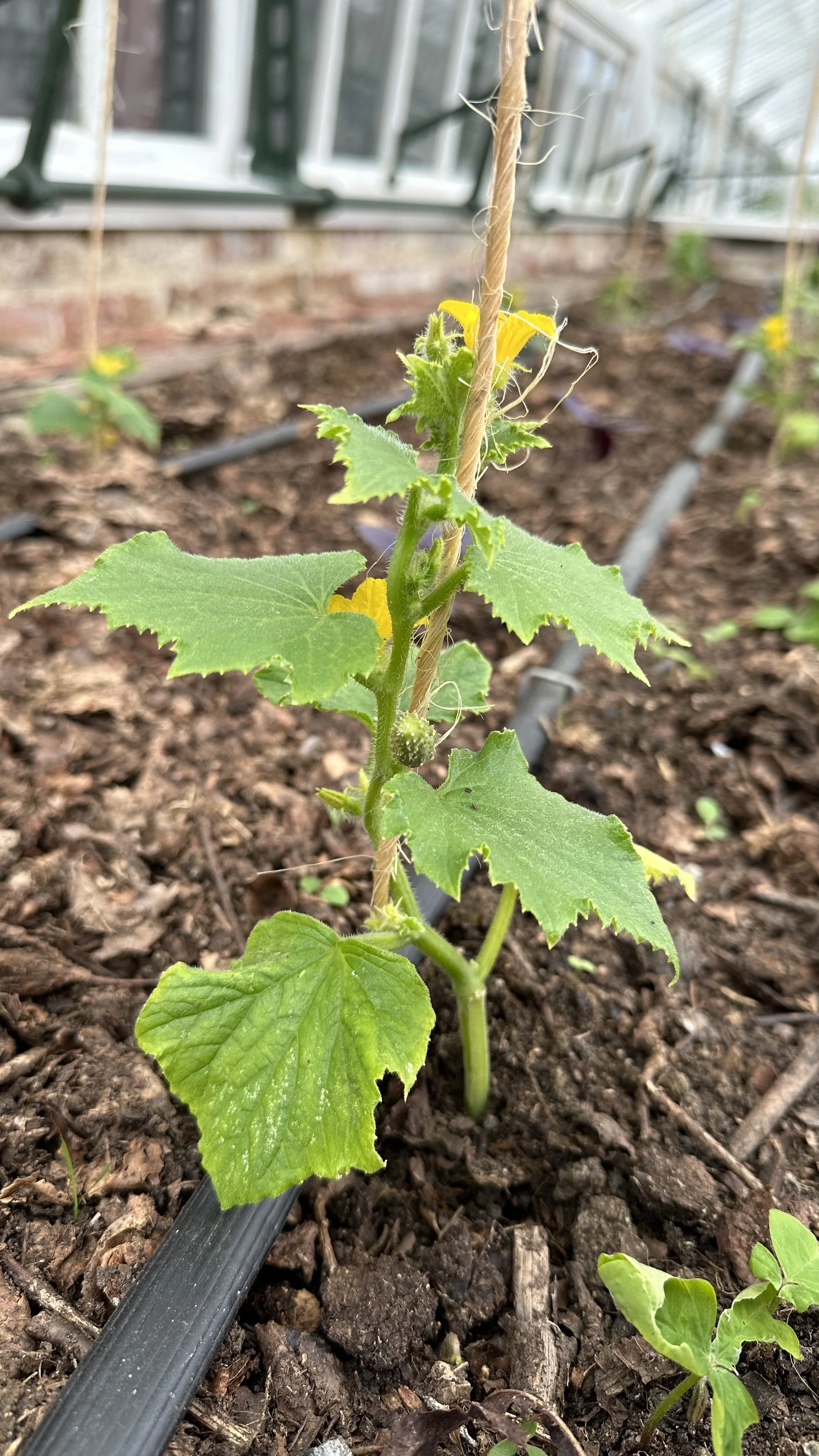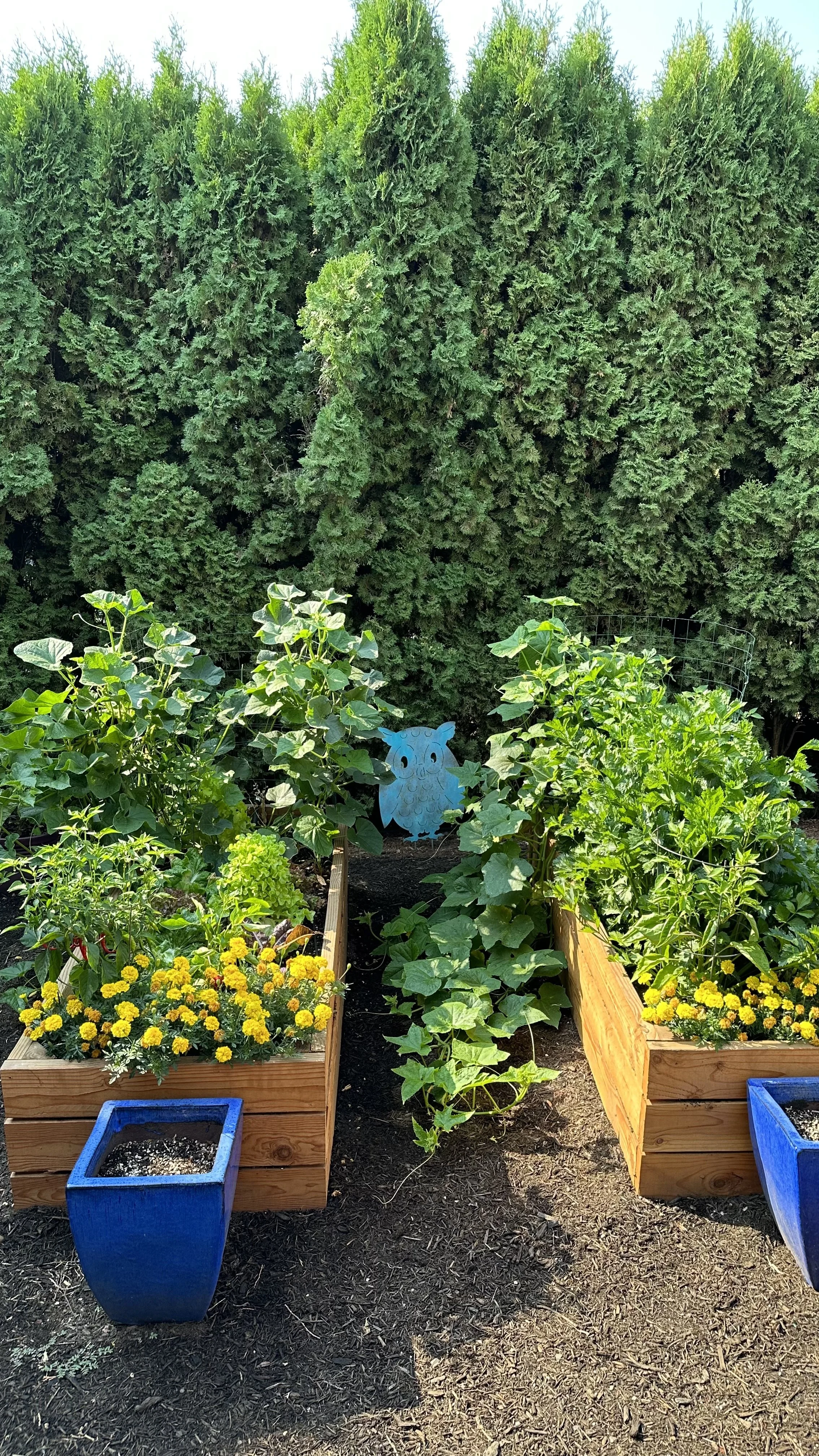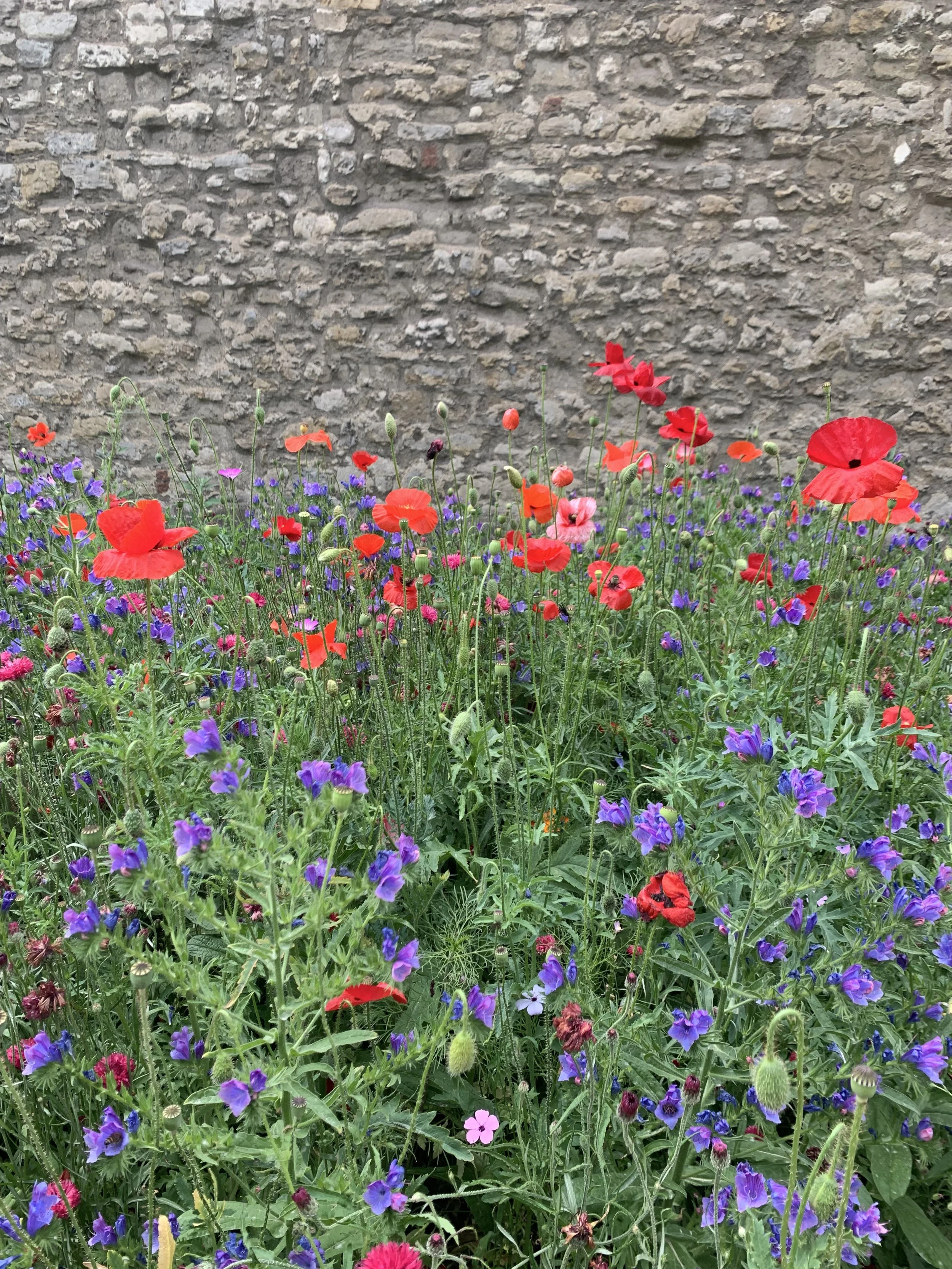How Often to Water Mint
This article has links to products that I may make commission from.
Mint is one of my favorite herbs to grow, particularly because growing mint in your garden lends itself to cups of fresh mint tea at anytime.
Mint is a hardy and versatile herb that's easy to grow, both indoors and outdoors.
Whether you're growing mint in a pot on your windowsill or in a garden bed, proper watering is key to keeping your mint plant healthy and thriving.
But with so many factors to consider, from the size of the pot or garden bed to the climate and humidity, it can be difficult to know just how often to water mint plants.
In this article, I will walk you through how often to water mint, from seedlings to mature plants, to help you keep your mint plant healthy and happy.
I'll also touch on some common mistakes to avoid, such as overwatering or underwatering, and share tips for how to tell when it's time to water your mint.
To learn more about growing mint, check out my guides:
How Often to Water Outdoor Mint Plants
Mint plants that are grown outside in the garden typically require once or twice a week watering.
This frequency may vary depending on your climate and the time of year, so it's important to monitor the soil moisture level and adjust watering as needed.
In hot or dry weather, you may need to water more frequently to prevent the soil from drying out completely.
To water outdoor mint, make sure the soil is evenly moist, but not waterlogged.
It's important to avoid overhead watering, as this can encourage fungal growth and increase the risk of disease.
Instead, water the mint at the base of the plant to keep the leaves dry.
Here are the mint plants and mint seeds I recommend growing:
To learn more about growing herbs, check out my guide:
How Often to Water Indoor Mint Plants
The frequency with which you should water indoor mint will depend on several factors, including the size of the pot, the type of soil, the temperature and humidity in your home, and the amount of light the plant is receiving.
In general, indoor mint plants should be watered once or twice per week, but it's important to monitor the soil moisture level.
To water indoor mint, check the top inch or two of soil regularly, and water when it feels dry to the touch.
When you do water, be sure to water thoroughly, until you see water draining from the bottom of the pot, and then empty the saucer to avoid waterlogging.
For more herb growing tips, check out my guide:
How Often to Water Mint Seedlings
Mint seedlings should be watered regularly to keep the soil evenly moist, but not waterlogged.
Watering frequency will depend on several factors, including the size of the container, the type of soil, the temperature, and the humidity levels.
In general, mint seedlings should be watered once or twice a week, but it's important to monitor the soil moisture level and adjust watering as needed.
To water mint seedlings, make sure the soil is evenly moist, but not waterlogged.
Water at the base of the plant to avoid overhead watering, which can encourage fungal growth and increase the risk of disease.
To prevent waterlogging, make sure the container has drain holes in the bottom and use a well-draining potting mix.
It's also important to avoid letting the soil dry out completely, as this can stress the seedlings and slow their growth.
If you're not sure whether the seedlings need water, stick your finger into the soil about an inch deep.
If the soil feels dry, it's time to water.
By monitoring the soil moisture level and adjusting watering as needed, you can ensure that your mint seedlings have the conditions they need to thrive.
For more watering tips, check out my guide How Often to Water Seedlings.
Here is my favorite watering can for the job:
Looking for more herb garden inspiration? Check out my guides:
Factors that Effect How Often to Water Mint
SOIL MOISTURE LEVEL
The most important factor to consider when watering mint is the soil moisture level.
A mint plant needs soil that is evenly moist, but not waterlogged.
Overwatering can lead to root rot, which can kill the plant.
POT SIZE
The size of the pot you are growing your mint in can also affect how often you need to water.
Smaller pots will dry out more quickly than larger pots, so you may need to water indoor mint plants more frequently if they are in smaller containers.
LIGHT CONDITIONS
The amount of light the mint plant is receiving can also affect how often it needs to be watered.
Mint plants that are growing in bright, direct sunlight will dry out faster than plants that are growing in lower light conditions.
If your indoor mint plant is in a sunny window, you may need to water more frequently to keep the soil moist.
HUMIDITY
The humidity levels in your home can also affect how often you need to water indoor mint.
If your home is dry, you may need to water indoor mint more frequently to keep the soil evenly moist.
To increase the humidity around your mint plant, you can place a saucer filled with water near the plant or use a humidifier.
DRAINAGE
Good drainage is essential for mint plants, as they do not like to sit in water.
Make sure your pot has drain holes in the bottom and use a well-draining potting mix to ensure that excess water can drain away from the roots.
If you are growing mint in the garden, make sure the soil has good drainage and is not compacted, as this can lead to waterlogging.
For more tips on growing mint, check out my guide:
Can You Overwater Mint Plants?
Yes, you can overwater mint plants.
Overwatering can lead to root rot, which is a common problem in mint plants.
This occurs when the roots are sitting in water for extended periods, causing them to become waterlogged and susceptible to rot.
Root rot can cause the leaves of the mint plant to yellow and wilt, and the plant may become stunted or stop growing altogether.
If the root rot is severe, it can kill the plant.
To avoid overwatering, it's important to monitor the soil moisture level and adjust watering as needed.
Mint plants prefer soil that is evenly moist, but not waterlogged.
To determine if your mint needs water, stick your finger into the soil about an inch deep.
If the soil feels dry, it's time to water.
In addition to monitoring the soil moisture level, it's also important to use a well-draining potting mix and make sure the container has drain holes in the bottom to allow excess water to drain away from the roots.
For more watering tips, check out my guide:
For more herb inspiration, check out my guides:
How to Grow Mint at Home
Growing mint at home is easy and there are a few simple steps you can follow to ensure success:
Choose the right location:
Mint prefers a location with partial to full sun and well-drained compost.
Learn more about the best compost for gardens.
Start with a cutting or buy a young plant
You can start mint from seed, but it's often easier (and much faster) to start with a cutting from a friend or neighbor's plant, or to buy a young plant.
To learn how to do this, check out my guide Growing Mint from Cuttings: Easy Step-by-Step Guide.
Plant in a container:
Make sure the container is big enough to accommodate the plant's root system and has drain holes in the bottom to allow excess water to drain away from the roots.
Water regularly:
Mint prefers potting soil that is evenly moist, but not waterlogged.
Water your mint regularly to keep the soil evenly moist, but be careful not to overwater, as this can lead to root rot.
You can use rainwater collected from a water butt.
Prune regularly:
Mint can be an aggressive grower, so it's important to prune it regularly to keep it from becoming too leggy and to encourage bushy growth.
Pinch back the tips of the stems regularly to keep the plant compact and encourage branching.
Harvest leaves as needed:
You can start harvesting mint leaves as soon as the plant is established and has several inches of growth.
Snip the leaves just above a node (where a leaf joins the stem) to encourage new growth.
Warning!
You should be careful about planting mint in the ground because mint can be an aggressive grower.
Once mint takes root, it can quickly spread and take over an area in the garden.
This is due to its tendency to send out runners and underground stolons that can root and create new plants.
If you plant mint in the ground, it's important to give it plenty of room to grow and to keep it contained by planting it in a container or by digging a trench around the plant to prevent it from spreading.
In addition to its tendency to spread, mint can also be difficult to remove if it becomes invasive.
Once mint has established itself, it can be difficult to eradicate, so it's important to think carefully about where you plant it and how you manage its growth.
How to Make Mint Tea
Here's how you can make a cup of tea using mint that you grew at home:
Ingredients:
Fresh mint leaves
Water
Honey or sugar (optional)
Instructions:
Pick the mint leaves: Gently pick a handful of fresh mint leaves from the plant, making sure to only take what you need and leaving enough leaves for the plant to continue growing.
Wash the leaves: Rinse the mint leaves under cool water to remove any dirt or debris.
Prepare the water: Bring a pot of water to a boil. The amount of water you need will depend on how many cups of tea you want to make.
Steep the mint: Once the water has come to a boil, remove it from heat and add the mint leaves. Let the mint steep in the water for 3 to 5 minutes, depending on how strong you like your tea.
Strain the mint leaves, and enjoy!











